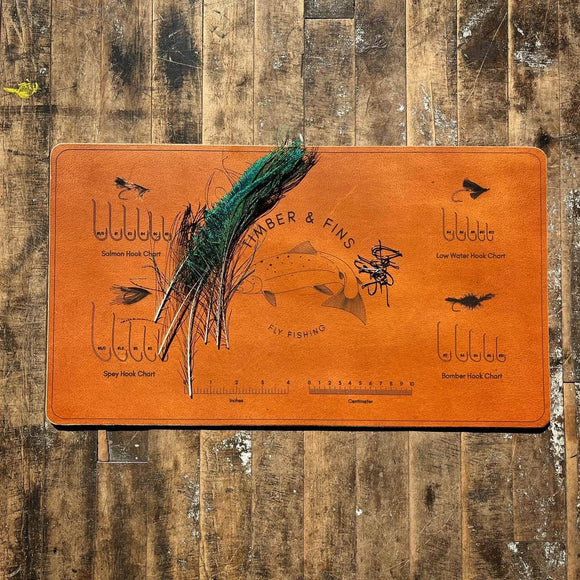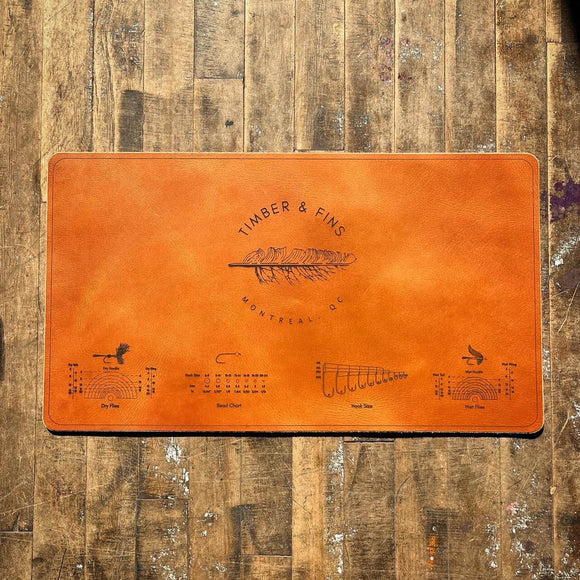par Fred Klein
La mouche Blue Jay est un magnifique modèle de mouche dont les origines sont inconnues mais probablement situées dans les îles Britanniques, comme c'est le cas pour de nombreux anciens modèles. Le premier compte rendu documenté a été inclus dans le livre de Charles Orvis « Fishing With The Fly » en 1883. La mouche noyée présentée sur une planche en couleur à l'huile montre une plume d'aile de Geai bleu américain. Les Geais bleus américains sont protégés depuis 1918, toutes les autres références trouvées postérieurement utilisent des plumes de Geai bleu européen, qui sont encore facilement disponibles aujourd'hui.

Geai bleu tel que montré dans Trout de Ray Bergman 1938

Jay Silver tel que montré dans Trout de Ray Bergman 1938

Jay Blue comme montré dans Trout de Ray Bergman 1938

Jay Yellow comme montré dans Ray Bergman's Trout 1938
Mary Orvis Marbury, la fille de Charles Orvis, a inclus le modèle de mouche mouillée Blue Jay dans son livre « Favorite Flies and Their Histories » en 1892. (illustré ci-dessous) Elle écrivait que les mouches Blue Jay ne sont pas des imitations d'insectes, mais tirent leur nom des plumes de leurs ailes. La couleur et les marques des plumes du Geai bleu européen et américain sont également belles, mais assez différentes, bien qu'également efficaces. Elle a utilisé le Geai bleu européen pour sa planche en couleur. Mary Orvis Marbury a également présenté une mouche appelée « The Ghost » à l'Exposition universelle de Chicago en 1893, utilisant des plumes de Geai bleu pour la queue. (illustré ci-dessous)

Geai bleu attaché par Fred Klein comme montré dans The American Museum of Fly Tying Mary Orvis Marbury

Le Fantôme attaché par Fred Klein - Mary Orvis Marbury
"Trout" de Ray Bergman en 1938 comportait plusieurs variations du Geai bleu, y compris le Geai bleu, le Jay Blue, le Jay Yellow et le Jay Silver.
Les Blue Jay Wet Flies sont particulièrement attrayants pour l'exposition avec leurs ailes bleu brillant. Je ne les ai pas encore pêchés en raison du coût des plumes ainsi que de leur expédition depuis l'Europe. J'ai lu qu'ils sont un attracteur très efficace pour la truite en petites tailles ainsi que pour la steelhead, le saumon et le bar en tailles plus grandes. J'ai quelques plumes d'ailes avec des défauts, donc je prévois de monter quelques Jay Silvers taille 10 et de les lancer pour la truite brune sauvage ici dans les Blue Mountains de Pennsylvanie. Ce sera certainement un changement par rapport aux mouches contemporaines auxquelles les truites sont habituées, et c'est tout simplement très amusant de laisser dériver un ancien modèle de mouche mouillée en aval.
Fred Klein
MOUCHES


Ensemble de mouches Steelhead
$260.00


Ensemble de mouche à saumon
$260.00


Ensemble de mouche à saumon #2
$260.00

Black Silver Tip
$5.99
MONTAGE DE MOUCHE


Napperon de montage "Heritage"
$115.00


La Puck - Porte-bouteille
$55.00








